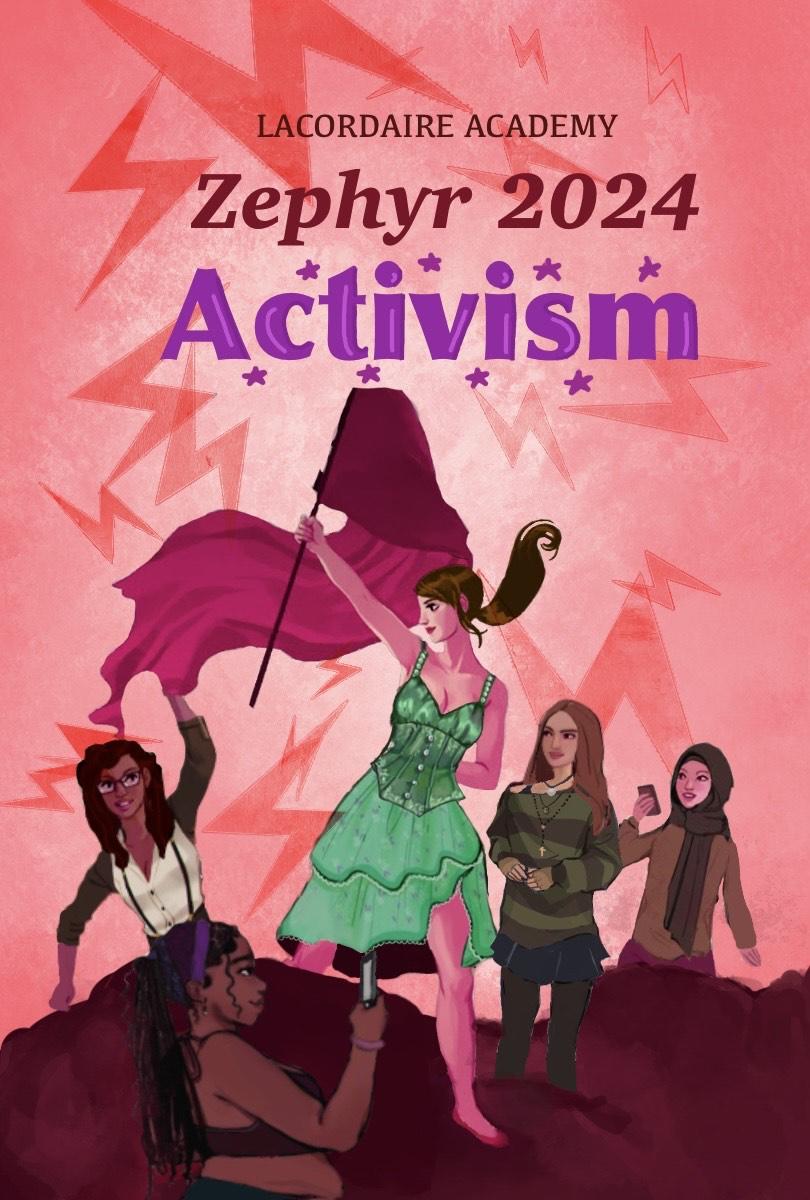

Table of Contents Zephyr
Editors
Lily Panday
Darian Rouse
Valeria Tapia
Sta�
Adriana Barnett
Anne-Christa Benoit
Laila Dailey
Lilina Giarrusso
Elleana Mariano
Julia Rearden
Lily Sandels
Elin Smith-Freitag
Joelle Walden
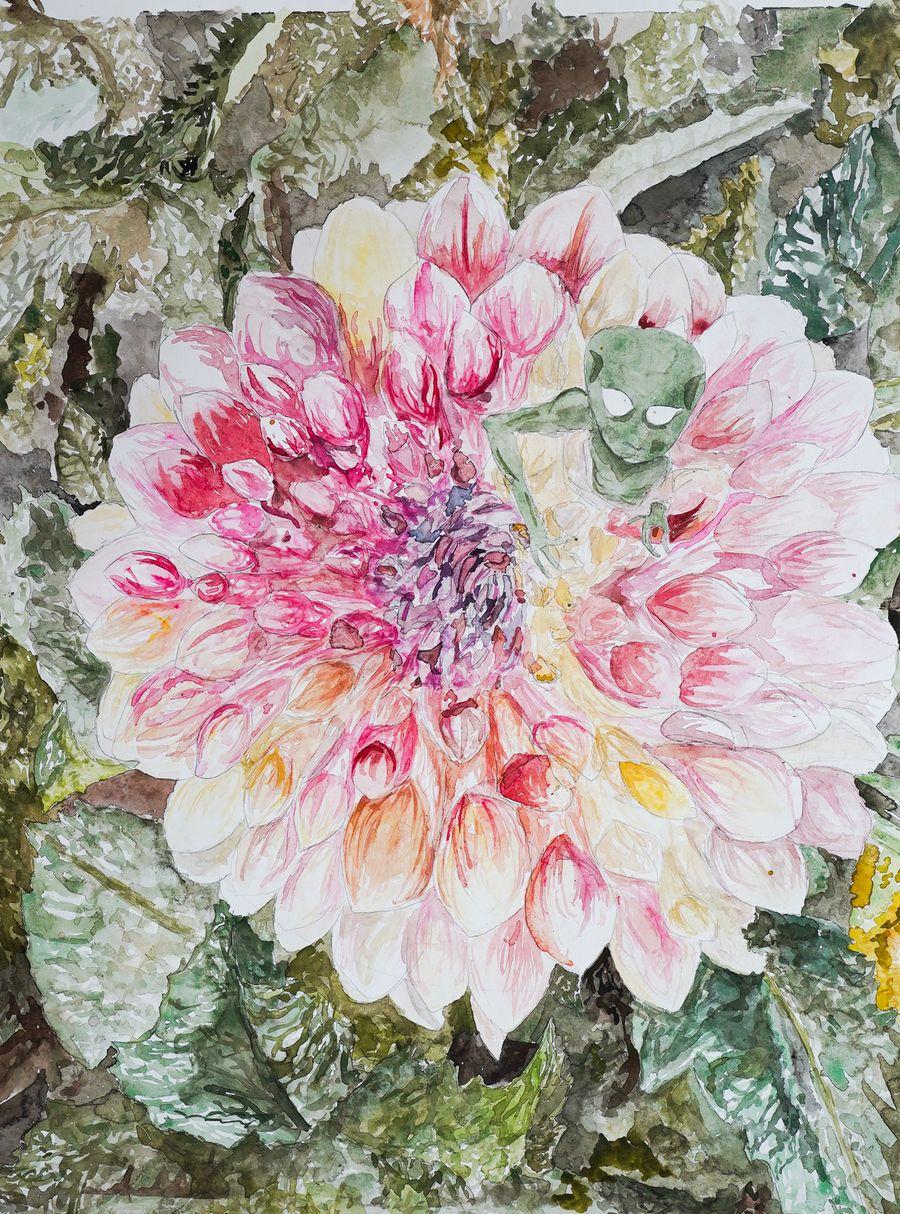
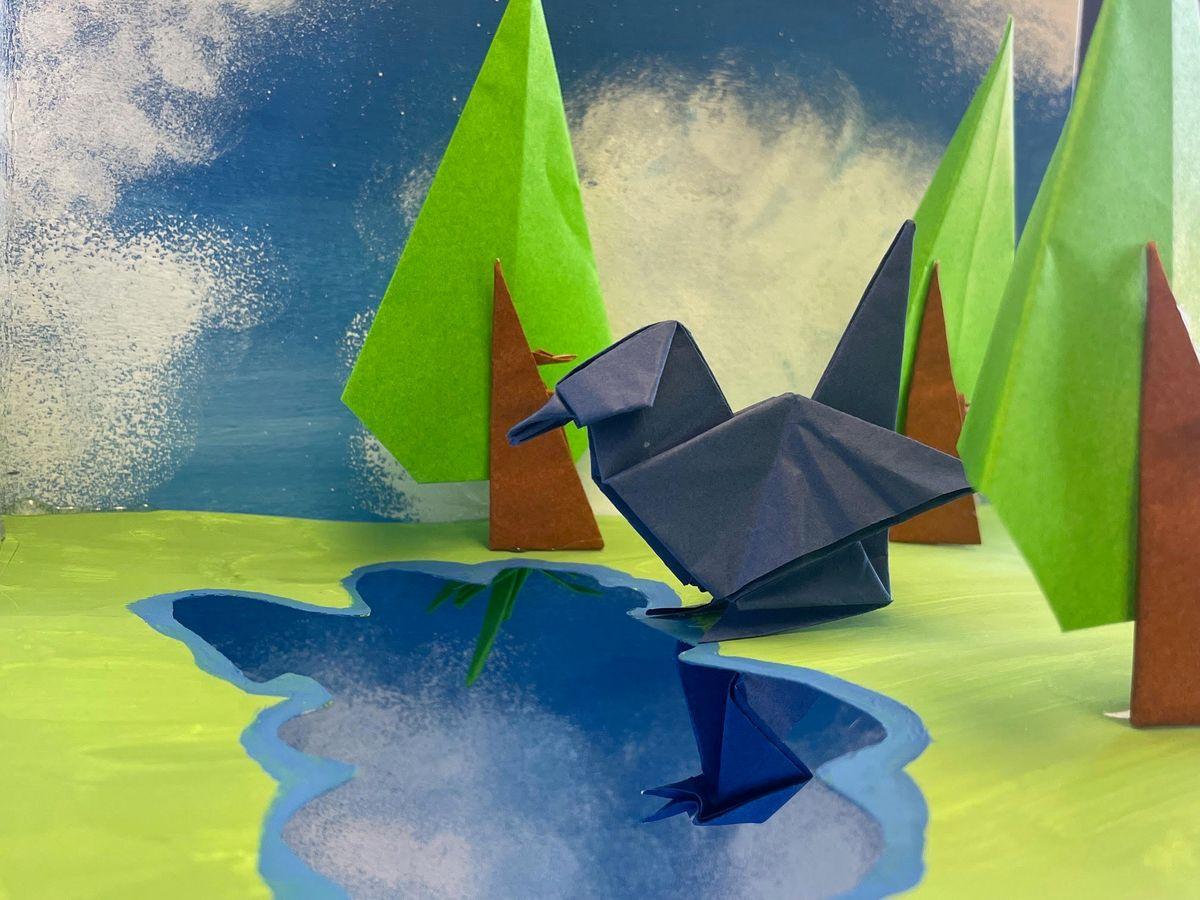
Cover Art
Julia Rearden
Art this page
Elleana Mariano (top)
Elin Smith-Freitag (bottom)
Dedicated to 2024 Sister Pat Stringer
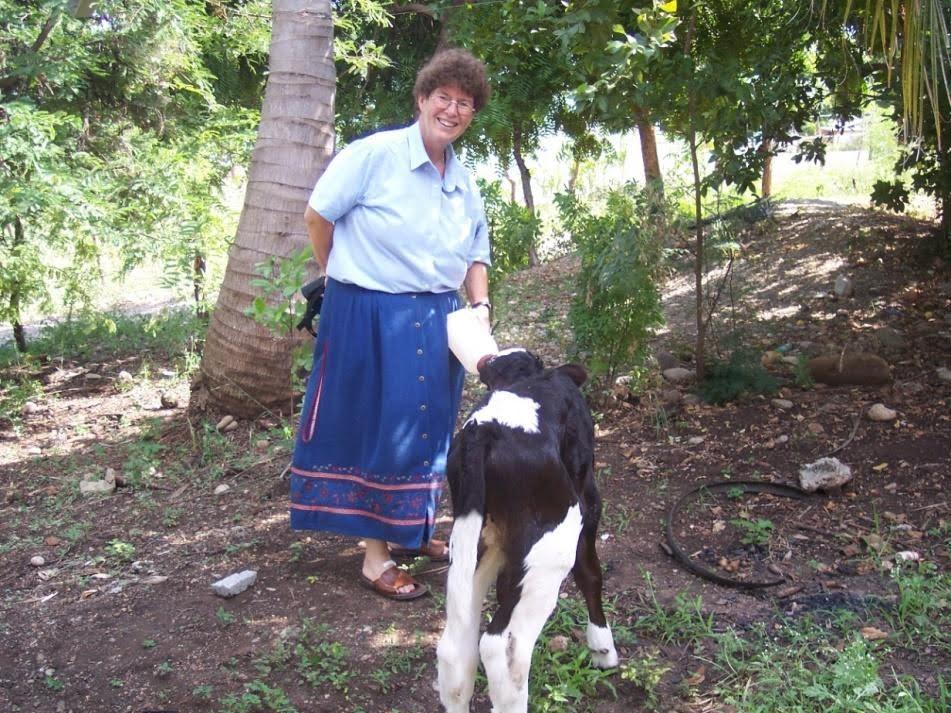
Add body text
We dedicate this year’s Zephyr magazine to Sister Pat Stringer for her many years of service and activism. She has dedicated more than 50 years of her life to education often in far away places like the Dominican Republic and the Bahamas. Sister Pat is retiring this year from Lacordaire Academy, and she will be sorely missed. The students know that Sister Pat loves them and always wants them to do their best.
Darian Rouse, a sophomore, recently sat down with Sister Pat to talk about her career and her activism. Here are edited excerpts from that interview:
Zephyr
Interview with Sister Pat Stringer continued:
D: When did you become a nun?
P: I entered in 1969
D: Oh wow!
P: I know, longer than you’ve been born
D: *Laughs*
P:*Laughs*
D: Where have you traveled during your ministry?
P: Well I lived and worked in the Bahamas, Ecuador, and the Dominican Republic. I traveled to Europe. As a pleasure trip, I traveled to Peru and a few states. Right now I sit on a national committee of Dominican Sisters. So I traveled to Florida just recently. I'm going to Ohio in the fall. I get to travel a lot in my ministries.
D: That's amazing. Ok so how has your ministry in other countries affected you as a person?
P: Well, I think, especially when I was in the Dominican Republic, people, or I should say students, did not have opportunities for education so after we started the grade school, it was the students who wanted the high school. I was very, well, they left me very impressed. And when I asked them, they didn't say gym, they didn't say lunch, or a cafeteria, they said a high school so that they could continue their education. So that really connected with me and helped me to see the importance of not having an opportunity because I've always had it. The fact that there were people who wanted it, especially during the 2000s, well it was very moving for me
D: That's beautiful. How has your childhood affected your activism?
P: My parents were involved in, you know, church and my father even though there were no boys in my family when I was young (I was 16 when my brother was born.), my father was very active in Little League and baseball. To be very honest I had what I needed as a child. I mean we weren’t rich, but we were certainly comfortable. I was able to realize that that was a gift to have that, you know the freedom to go out and play and the opportunities for a good education, to go on family vacations, not to Europe or anything, but down the shore for a couple of days.
I was able to see what others didn't or don't have and seeing what I had, it made me realize the gift that I was given, and I wanted to share that with others.
D: Ok so what has been the most impactful experience in your life?
P: I think working in the Dominican Republic and being able to see a school go from, well when I got there, there were 4 classes, you know 1st grade through 4th grade and then my ability to work with the people, the parents who wanted a good education for their children. And also we were able to set up some medical opportunities because there wasn't a doctor. So just to see that, we went from one grade to 8 and then we built a pre-school and then we were able to build a high school. So just to see physically the growth of a community and being able to work with the parents and the teachers, I had a great group of teachers who really cared and were willing to put in extra time. And when they wanted the high school, and I told them to go get land, they did. So there was a piece of land that a rich man owned from the capital, and they got him to donate it. So it's the experience I get being able to work with the people who wanted so much for their children.
D: That’s great. What characteristics would people describe you with?
P: *Laughs* I guess steadfast, a hard worker, someone who can see a problem and at least come up with some solutions. It may not be the right solution, but at least a solution and an activist I guess is a good word.
D: *Laughs* And for our last question, what are you most excited about for your future endeavors?
P: Well I’ll miss Lacordaire, I’ll miss the students, the faculty, and the administration. But I’m also involved in a lot of activities so I think just having more time to read and to be more prepared to do more justice work and to be involved in this conference with the Dominican Sisters. And I’m the treasurer so I'm learning, and you know I'm a math teacher, and I majored in math so I'm learning more about accounting. It is a challenge, but it's interesting, and I’m learning more about investments. So I'm looking forward to that and just, well, I work with young adults so having more time to work with the young adults. Hopefully I can bring our 3 academies, Lacordaire, Mount St. Dominic, and St. Dominic’s in Jersey City together to do more activities together and have the students meet each other and get to know each other better.
D: That's great, thank you so much for sharing your story with us.
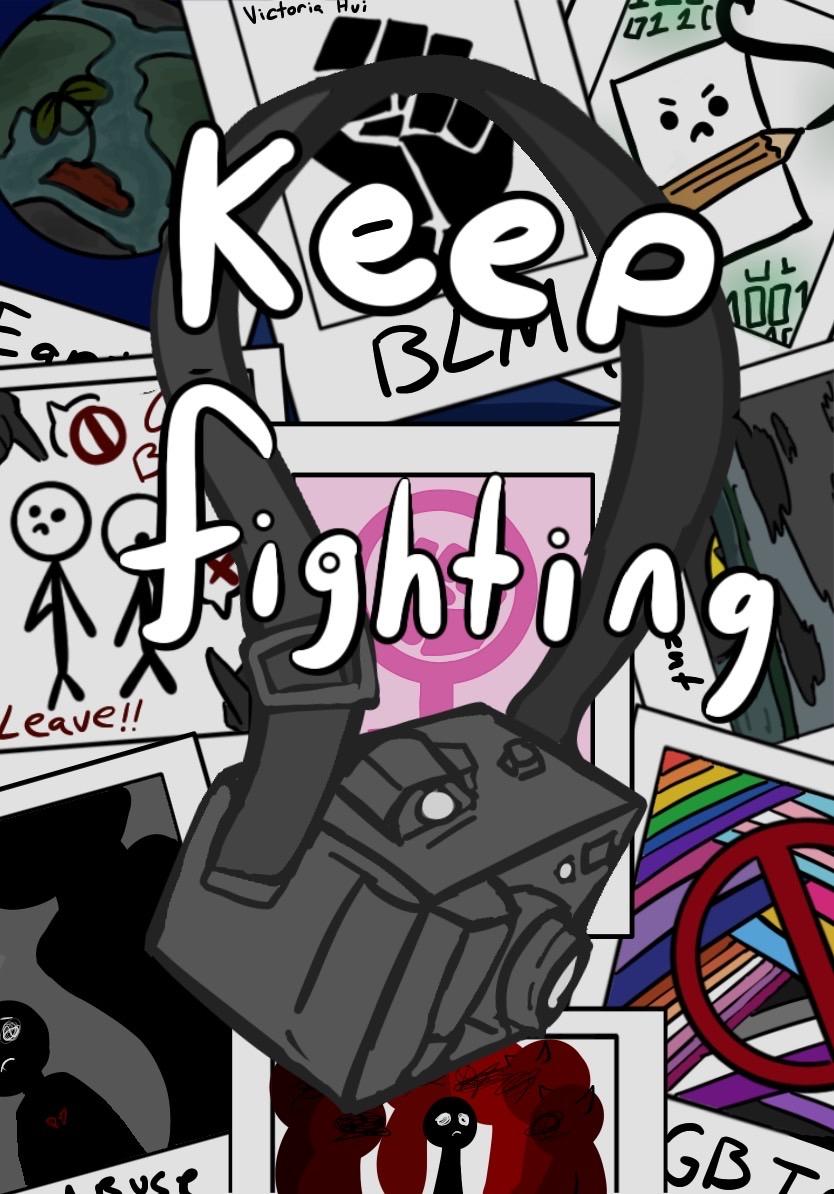
Victoria Hui '25 Digital
Why do you meet them with such anger? 2024
Lilina Giarrusso '25Why do you meet them with such anger? You did not meet the others like that. When they were climbing over walls, storming the place. You stood there, silent, unmoving, almost tranquil. But when they peacefully hold signs, and sit-ins, you meet them with anger. Tear-gas, fireworks, military-grade equipment. None of that was used, when they were actively robbing the center of our government. None of that was used, while calls were made to the police station from a child hiding in a classroom. None of that was used.
You did not meet the intruders with anger, you did not meet the killers with anger, you did not meet the privileged with anger. I fear the corruption in your heart.
Infinite Interpretations of Love
Lily Panday '26“You have a boyfriend yet?”
“Where’s your girlfriend, huh?”
Uncomfortable questions that a lot of young people have to laugh off. Your family asks, your friends ask, shouldn’t you give them an answer? Do you have an answer? Then you should find someone, right? Because that’s what they said. Society, as well as many cultures around the world, make a big deal about having a romantic relationship. Modern society often equates getting into a relationship as a
"flex” nowadays - an amazing thing everyone wants, yet that is not the universal truth. There are people who do not desire that affinity, but they are surrounded by family, friends, and media that encourage them to seek one. Numerous young people who lack those feelings of attraction or romance grow up thinking that it's a crucial part of life that they are missing.
It is a harsh insecurity created by anyone but themselves. It can be difficult to not fall into those insecurities when the idea of getting romantically involved is nearly inescapable, and those who have no interest are considered to be heartless, undesirable, or lack love to give, when that can be anything but true. There are infinite interpretations of love that exist. Better yet, no single form of love is mutually exclusive to have, and everyone has a place in their heart to give and receive it. Labels do not always encapsulate a person’s identity and are not entirely needed. No one knows who you are better than yourself, and there is no need to prove that to anyone either. Existing comfortably as you and not wanting to pursue romantic relationships should not be a societal stigma. Instead of putting pressure on others to find a special someone, we should gear the lens of society towards retaining a quality of empathy and compassion for one another. That kind of broad, interpersonal care for each other is what should be encouraged, and would save many from the shame of lacking romantic partners.
Hues
Chandani Diaz '27i scoffed at the summer storm yesterday the soft poisonous touch of the bittersweet raindrops did not faze me what business is it of mine to worry of the fate of others drowned in my refreshing waterfall?
the flashing lights of my mother's elegant dinner parties the safe scent of her perfume my cousin's wedding, the excitement of that day to come for me the earthy aroma of dirt fresh after a warm shower
my world is painted in watercolor hues the canvas playfully illustrated in bright lively colors bees hum through my hazy field sunshine pressing down onto my tanned face like a warm kiss
idle pleasures meander lazily throughout my days my friends and i run barefoot in the dewy grass our white dresses hang with the seriousness of an angry toddler around our ankles
shrieks of delight the score to my ballet
There is nothing more than this I inhale green and exhale white.
i scoffed at the summer storm before the buzz of fluorescent lights are all that i have as a sorry excuse for music storm showers, the sands of time: they are all the same to me
i find myself indifferent towards everything it frightens me each time i dare to think too hard about it
sometimes it feels as though i'm a single figure sketched onto a faded blue canvas
going out each day feels at once as if the street is deserted and so thick with animals i could suffocate at the end of each day my back sadly slouches over like bound feet savagely breaking in to conform to Something? and drink up
i used to never tire and now all of my time spent outside of being pawns in one of the billionaire's perverted candy land fantasies is occupied by dreams sweet sweet dreams so warm and loving they could bring a tear to persephone's eye,
the only part of my life still painted in watercolor hues
how can a world once so lush, so alive turn to this wasteland this bare desert?
and here i am when i wake up Harlequino still a child really in a bed surrounded by an ocean of cold gray all friends gone
i scoffed at the summer storm once but i laugh no longer now
i watch the technicolor teens smile as they forget they are dying with each breath
my old bones may be frail now but do not pity me no,
do not judge me for i can walk just fine.
i have come to the conclusion that all children are heartless this is not their fault, of course we adults have our fully grown mature hearts preventing us from silly mistakes like breaking vases and bones and hearts but what do children know?
the sands of time and the summer storm are not kind to the aged but warm beaches and gentle showers are dear friends to the youthful
i may sound cynical to young ones like you i may offend you with my boldness does the truth damage your mental health? am i being insensitive to your triggers? can you breathe when you look in the mirror? were your parents too gentle to tell you the truth? need you take your placebo medication to grapple with the terrors of privilege?
we may all be inherently selfish but no one is quite so bad as you.
my earth is bone dry i don't remember the last time i felt an energized crack of lightning a thrilling gust of wind
my memories have melted together like wax on a candle
how lovely it would be to feel the touch of skin to be shown that there is still humanity
instill in me the pastel thoughts brought by the candymen what is it that so enlivens today's youth?
cursed are the children with old souls those that have dared to look past the illusion of the paint plastered across our eyes It has been ripped away from our hands.
i'm lying in the desert staring at the sky and i beg for the drought to end for that acid rain to fall just one more time
And yet.
My world has gone black. I am alone.
Tropical Tragedies
Joelle Walden '27
A forest blooming with orchids and tulips. Birds soaring gracefully above the canopy treetops. Vipers slithering, butterflies fluttering, rain drops plitplattering. This beauty glitters with life and color. With no time flat, the color vanished. A viper, once arrogant, now retreated onto a dirt patch. The caretakers came rushing, seeing the despair their garden was in. Embracing the bark, they comforted the forest giants. The metallic saws came and visited the garden again, but the garden’s caretakers showed their resilience and love for the tree giants.
A tree frog was climbing when the branch he was gripping fell. The buzzing sound woke the sleeping flowers, as bits of dust carried by the gale swept through the forest floor. A metallic saw caught a tarantula’s eye. And she watched as a tree came crashing down nearby. - continued
Deforestation harms the environment and releases carbon dioxide the trees absorb back into the atmosphere, while also removing a way to absorb carbon dioxide. All living things rely on their environment for support, and when that support is gone, what are these going to creatures lean on? Many indigenous people are fighting against big industries and governments that use their land to mine coal and cut down trees on their land for lumber. People defend their environment, but their fight is not always heard. It’s time for their voices to be heard
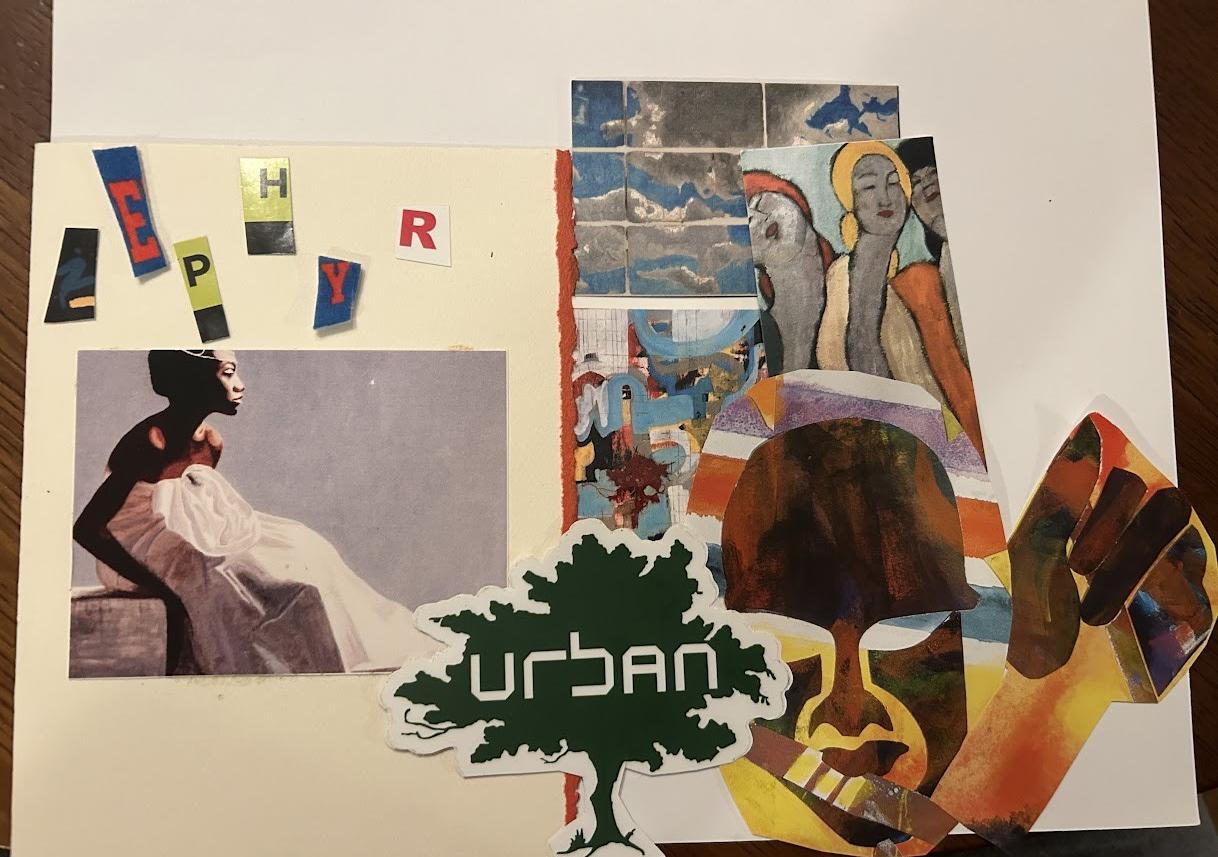 Amber Green '24 Collage
Amber Green '24 Collage
Earth Day Celebration 2024
Elin Smith-Freitag '25
O
n April 22, 2024, my classmates and I participated in a friendly Earth Day game; meant to simulate the effects of pollution entering ecosystems. During the game, a fellow student blurted out this quote, and despite the speaker addressing the conditions of the game rather than the real world, it could not have been more accurate in a real-world context.
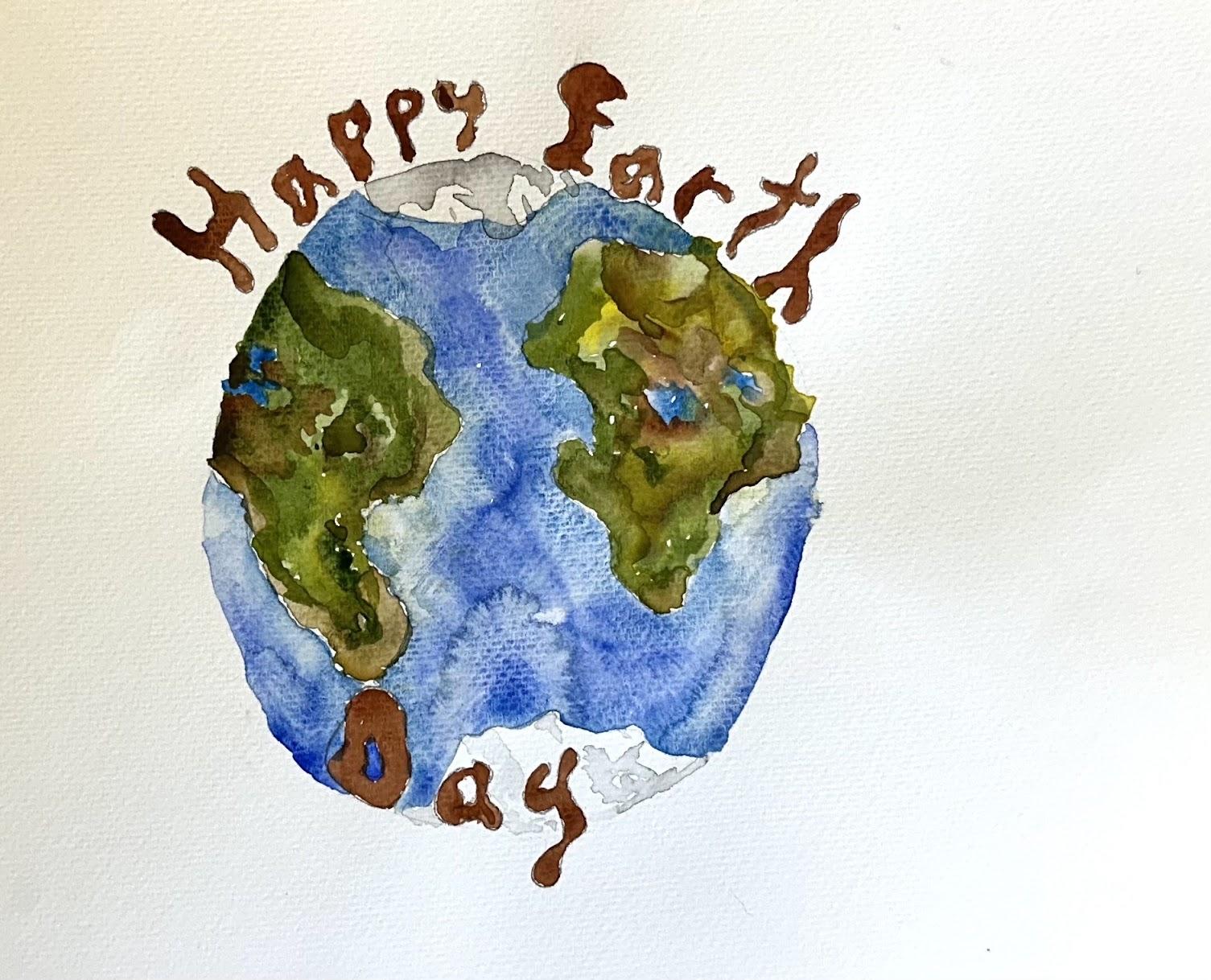
"The cards are stacked in favor of polluters over wildlife."
Though disheartening, the reality is that at our current rate of societal waste production, we are lessening the chances for the natural ecology around us to recover. Environmentalists, trash collectors, and good samaritans cannot combat the rate at which trash infiltrates wildlife habitats. Instead of dedicating a minority to ameliorating massive destruction, we must dedicate the majority to eliminating future disruption.
"Earth Day" Watercolor - Elin Smith-Freitag 25'A Porpoise with a Purpose
Joelle Walden '27I am not a dolphin
I am a humble friend of the ocean
I smile with joy and pure innocence
I may eat fellow creatures of the sea
I need to eat and I become hungry
Now I tell a solemn story
My brothers and sisters of the rivers and seas
We are struggling with life.
Only a certain number of us are still swimming
There are land-living creatures, and with long fins they walk
They don’t care if we keep smiling or not.
We were born with smiles
From life until death
Some of those land creatures cry over our
Still, melancholy smiles.
There is hope in the world
You can see it in our joy
Whether you care or not
Our happiness is something we hope to deploy
All around the seas
And on land.
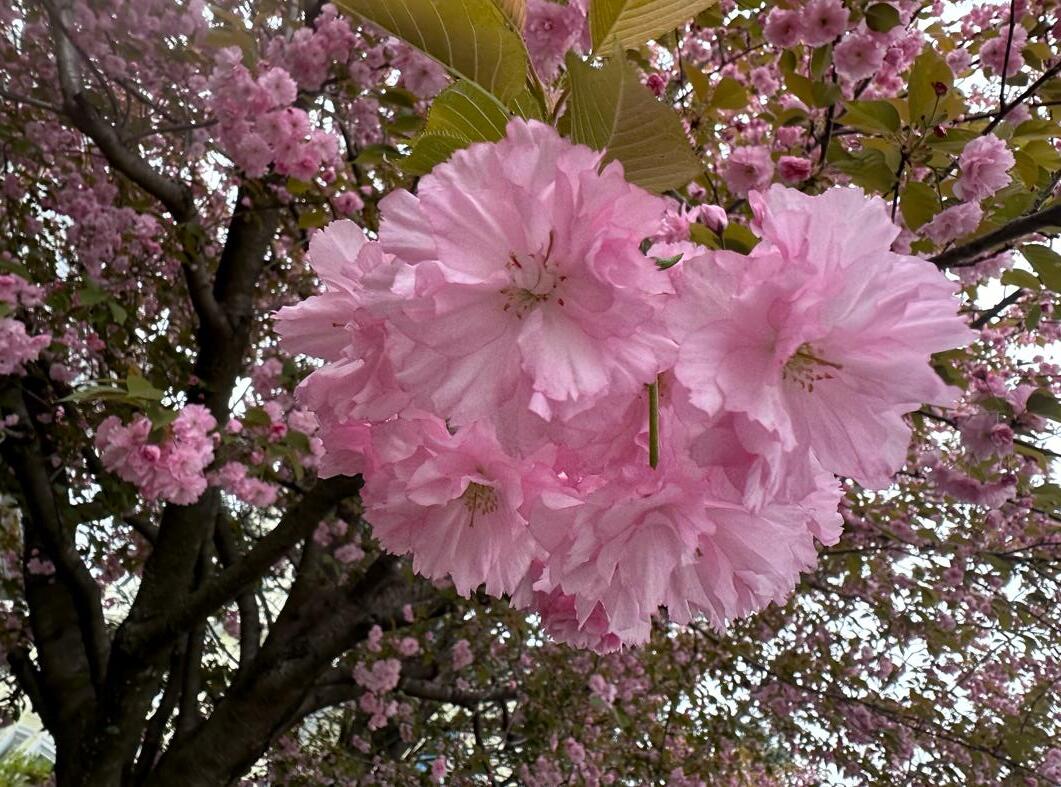
Close-up photography of the gorgeous spring splendor in bloom taken by Celia Valenti '26
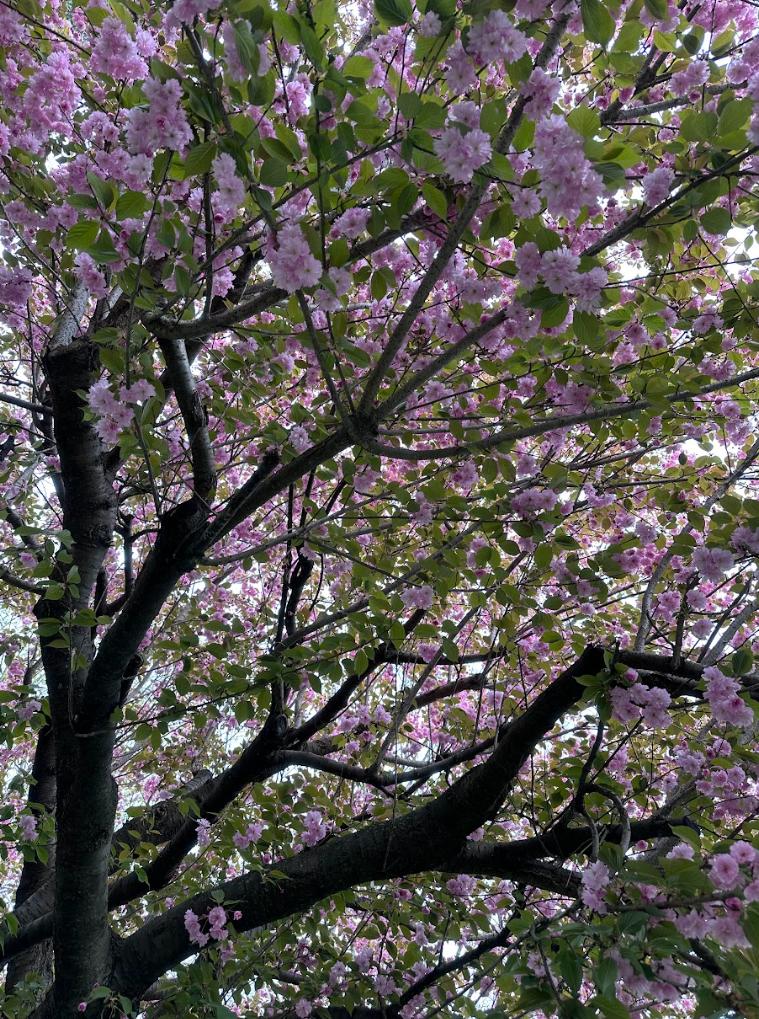
Space Cat
Adriana Barnett '25When I first heard my mission I was happy.
The chance to frolick the stars stood before me.
I left my crew a kitten, frog and a shrew
We soared to heights
No animal has ever reached
We passed Mars
With its red rocks
Then Jupiter
With its big spot
But soon, I realized Time passed much quicker up there
Once we reached Neptune 25 years had flown by.
I hadn’t frolicked the stars or encountered creatures on Mars
I’d only grow older - as my body grew colder.
Never to be held by the ones I love again.
My Ode to my Water bottle
The thing that's been with me since June 15, 2022
After a concert full of emotions
Listening and singing to the highs and lows of someone’s life
Some which you might've seen with me
Your green color,
The forest green
Which lights up my morning with cold water, I like to call you my “emotional support water bottle”
I have grown so attached to you that I named you
Emma
Your dents bring you character
And show all of our adventures together
I got you with a couple scratches,
Now you're bumpy all over.
In all the concerts I've gone to, you've been my companion.
You've traveled along with me to different countries
From the forest, which is similar to your color
To different cities, with bright lights.
You sleep next to me,
Just in case I get thirsty at night
I lost you for 3 weeks
It felt like an eternity
I never thought a water bottle would bring me so much joy
But also so much sadness
Getting a new you
It wouldn't be the same
Because it's not
You.
Aliens in our World Watercolors
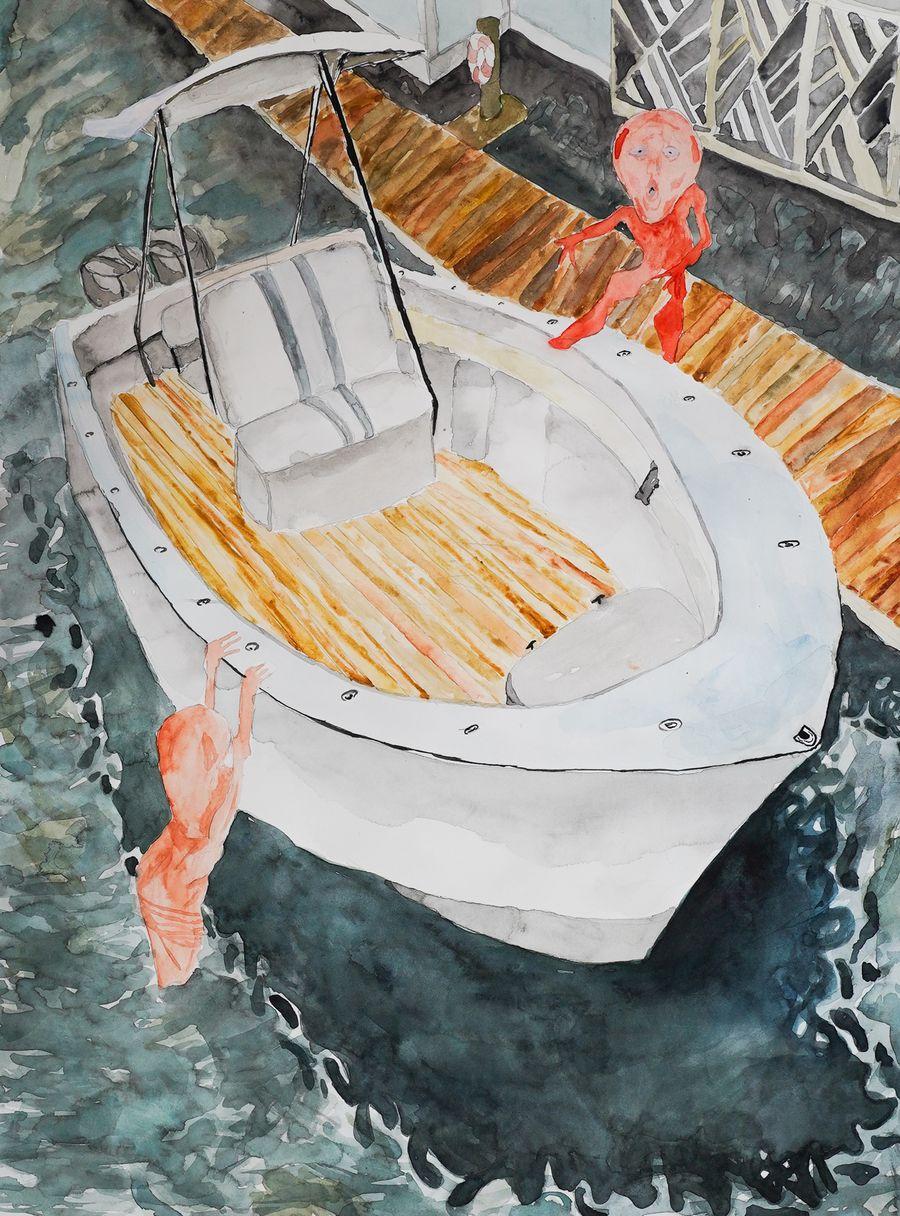
Made for Smith-Freitag's AP Art portfolio, these stunning water-color pieces show off not only her artistic talent, but also the power of her imagination with unique alien creatures!
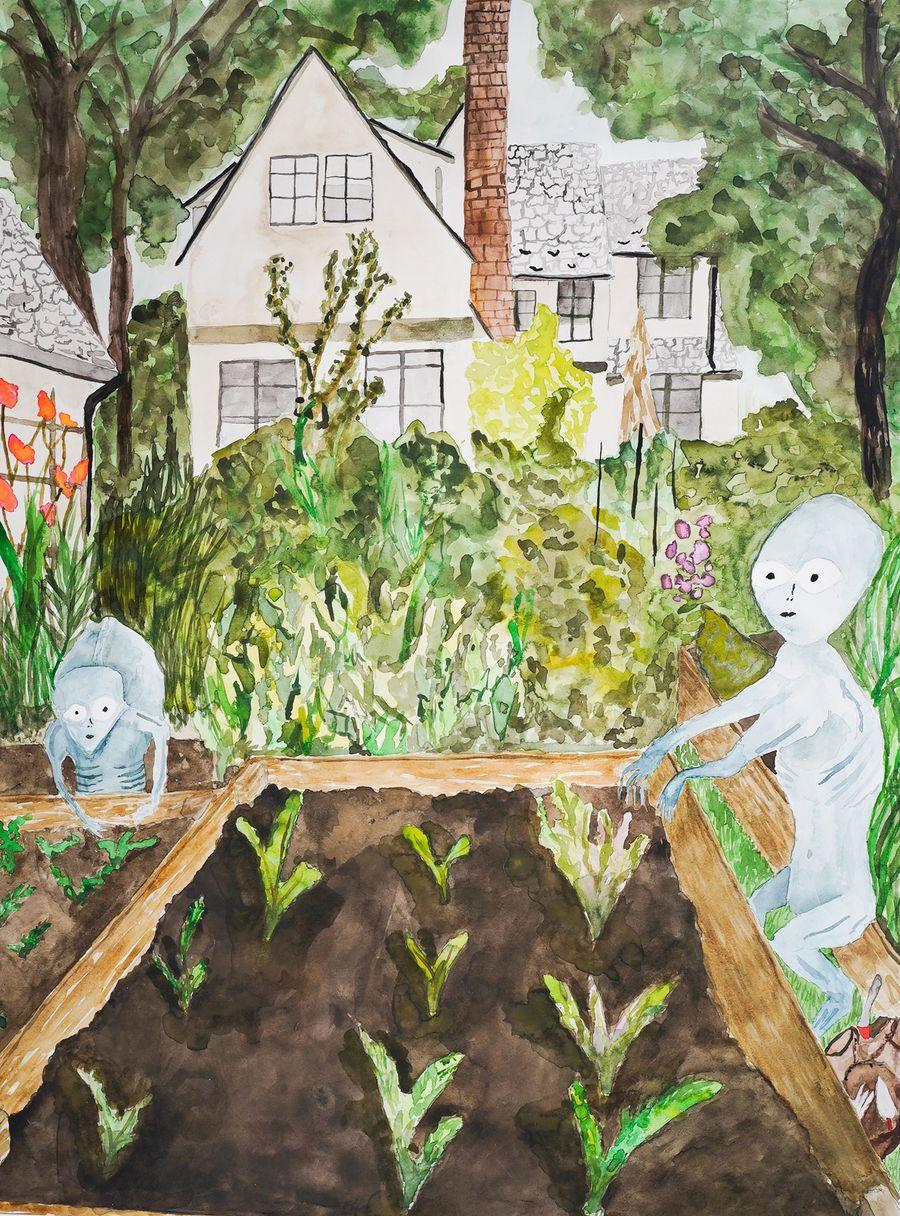

Elin Smith-Freitag '25
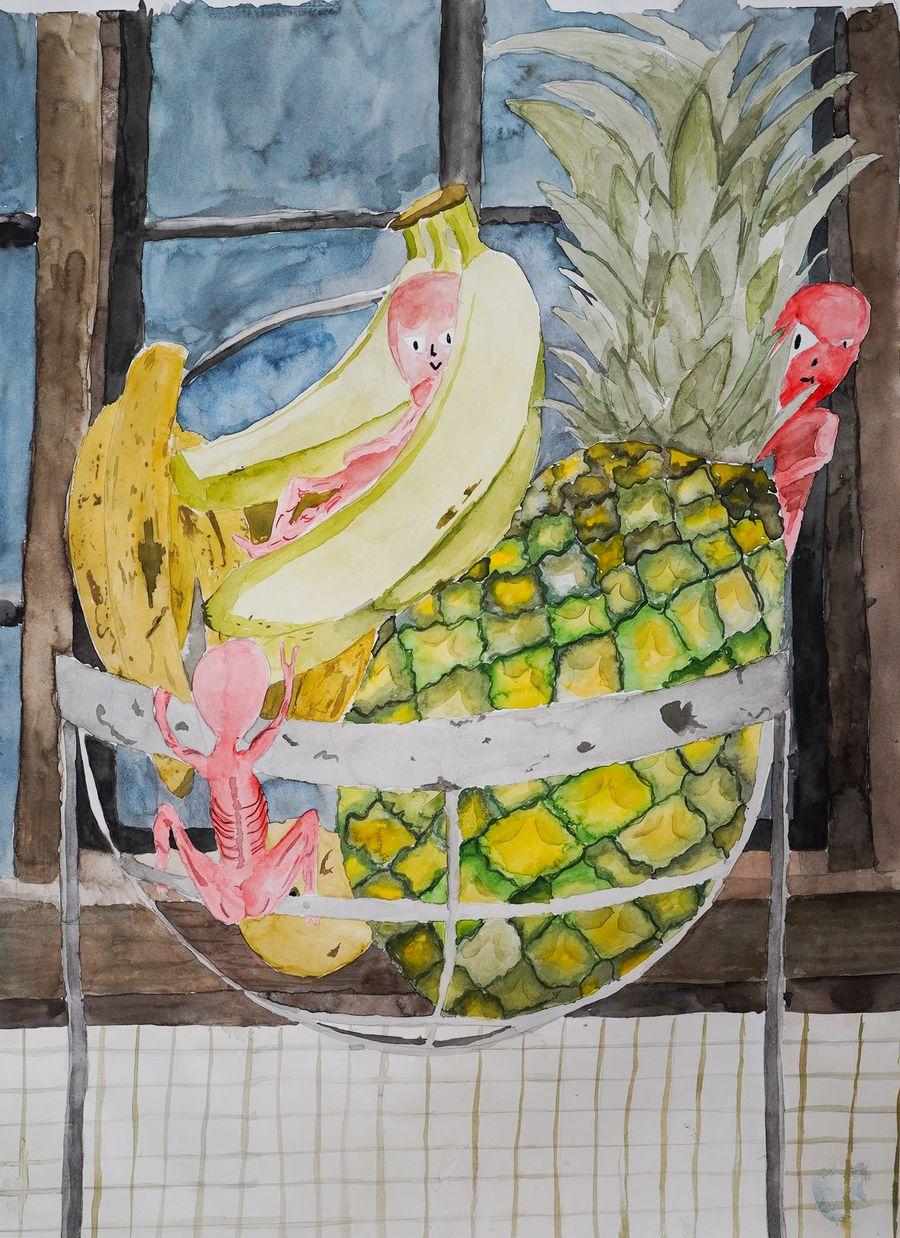
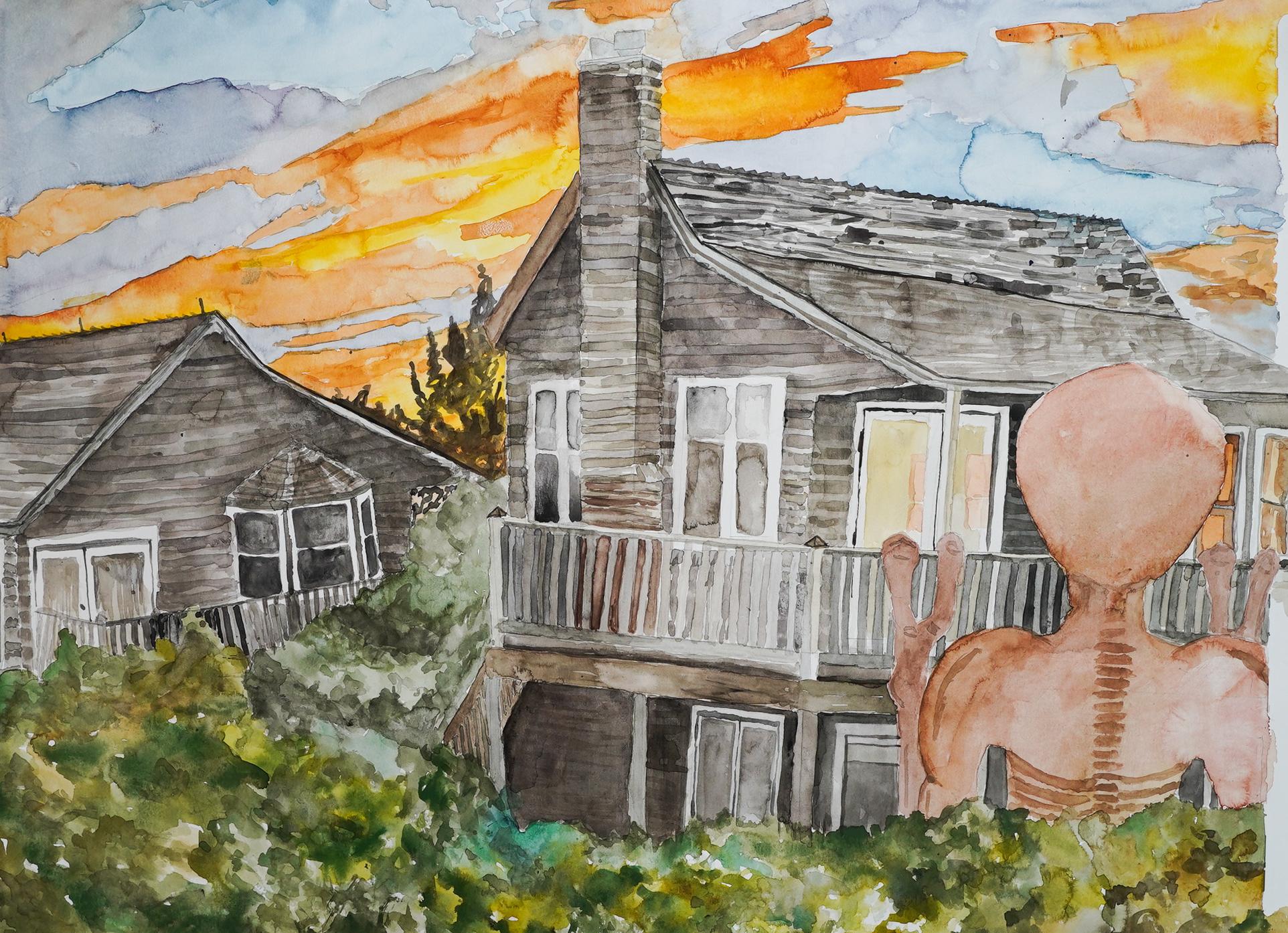 Elin Smith-Freitag '25
Elin Smith-Freitag '25
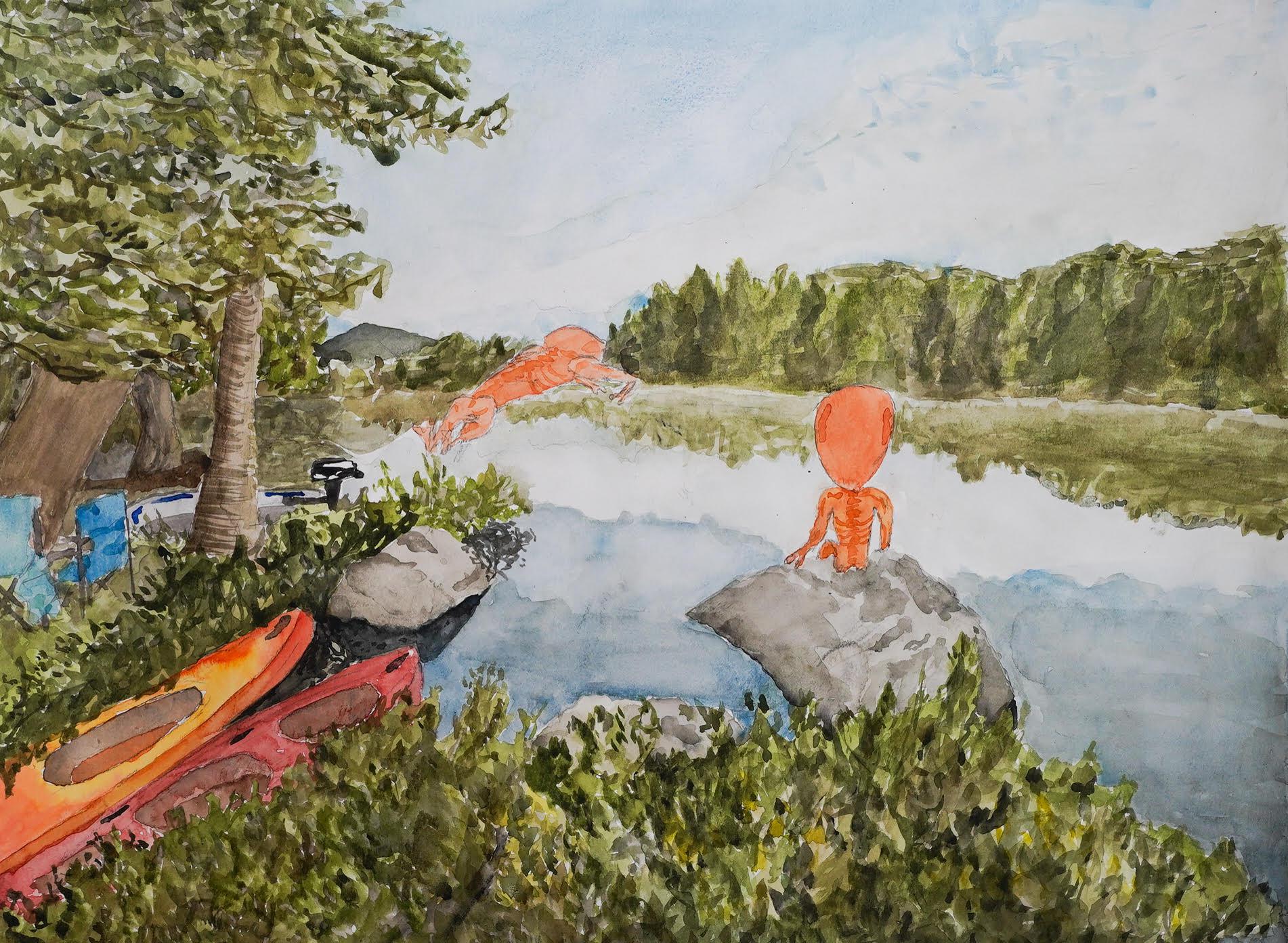
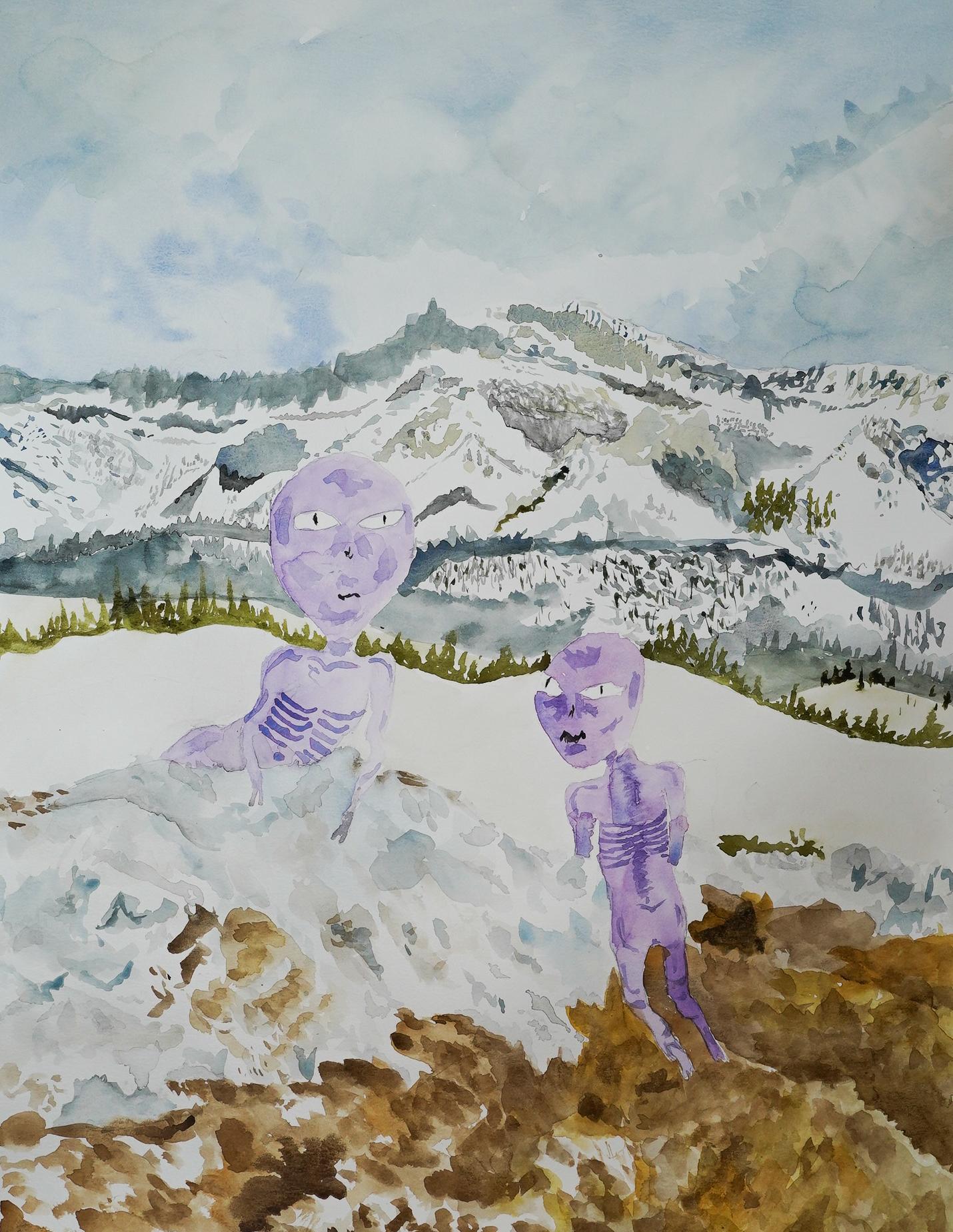
How Can We Be More Sustainable?
Lilina Giarrusso '25
There is a serious crisis of energy, water, and garbage waste at our beloved school, and it needs to be solved. In Lacordaire Academy’s AP Environmental Science class, four audits were conducted to quantify how much energy, water and waste we use or produce. The students conducted intense research, involving observation, calculations, and critical thinking. They studied water, electricity, transportation/fossil fuels, and waste management. Then, pros and cons were identified, and many of the students were left very conflicted about their school’s sustainability in each department. The data from each audit was obtained by students Isabel Pedersen, Elin Smith-Frietag, Lily Sandels, and Lilina Giarrusso.
Our first audit was the water audit. We took an aluminum basin and a timer so that we could see how long it took for the water to fill up the basin. This gave us valuable information about the water pressure of Lacordaire Hall. We also took note of what water sources existed in the building, advantages and problems related to use, and sustainable alternatives.
We found that, based on our water pressure each person is using 0.5530 gallons of water per hand wash. This number may seem small, but when you factor in how many students go to our school, how many times they eat, use the restroom, use messy art supplies, etc. the numbers add up. We made the assumption that the average person will wash their hands 5 times a day and that each hand wash takes 20 seconds. From these assumptions, we found that one person uses 2.76 gallons of water per day. Then, we assumed that the average number of Upper School students actually IN Lacordaire each day is 70. So if we multiple 2.76 gallons of water per day by 70 students in the building we are left with 193.2 gallons a day. That’s the same as 44,629 bottles of water a day or leaving a garden hose running for half an hour. This does not account for the middle school students or teachers, the other sources of water such as fountains, or times people may be using a sink other than to wash their hands. But why does it matter?
We want a sustainable future. Being sustainable will also make our school more attractive to potential students. Therefore, investing in sustainability is really investing in the prosperity of Lacordaire.
Our class has gone over many possible solutions to limit water usage. The highlights were lowering water pressure, using rain barrels, and installing motion-sensor faucets. These are very viable and affordable solutions. Lowering the water pressure will cost nothing, and will actually save money by lowering the water bill. All you need to do is rotate the screw on your faucet counter-clockwise to lower the pressure. Now, you may be thinking, “Well it doesn’t cost nothing, I need a handyman!” However, this is incorrect. The process is very simple and can be completed by any competent staff member, or we could recruit a school parent as a volunteer.
Installing rain barrels also is a very viable option, as it also can be costless. Recycled practice could be donated by families and installed by volunteers or staff. It would collect water that falls off the roof to be stored for later use. We could use it to water the lawn, fill up toilets, water indoor plants, science experiments, etc.
Finally, installing motion-sensor faucets is the most expensive option, but the price can be reduced by knowing where to look. On Amazon, there is a motion-sensor faucet with 15 reviews and an average of 4 stars for $29.99
We have 5 bathrooms in Lacordaire Hall, and I am unsure of the amount in James Hall and the Carriage House. Five bathrooms with 2 having 1 faucet and 3 having 2 means we would need 8 faucets. That would cost approximately $240. This is a small cost when you subtract all the money you will save from all the water kids waste leaving the faucets on or washing their hands for too long. (These calculations do not account for the sinks in kitchens or classrooms.)
After the water audit we completed the electricity audit. We counted every light source in Lacordaire Hall and found how many kilowatts they produce per year. We found that the appliances that take up the largest sum of our electricity were the large fridge (in the gym kitchen), the air conditioners, and the printers. Since these are the biggest vacuums of our power, we need to see how we can reduce their usage. For the large fridge, we observed that over 70% of its space was not taken up. The only thing in it were some juice boxes which definitely could’ve fit in the smaller fridge. So, the large fridge takes up a lot of space, the most power, but is barely being used? The best thing for the school is obvious. The large fridge needs to be sold. We would make a profit that we could put towards the motion-sensor faucets and still have plenty of money left over for other areas.
It would reduce our energy consumption by 5,810 kW per year. Since these are the biggest vacuums of our power, we need to see how we can reduce their usage. For the large fridge, we observed that over 70% of its space was not taken up. The only thing in it were some juice boxes which definitely could’ve fit in the smaller fridge. So, the large fridge takes up a lot of space, the most power, but is barely being used? The best thing for the school is obvious. The large fridge needs to be sold. We would make a profit that we could put towards the motion-sensor faucets and still have plenty of money left over for other areas. It would reduce our energy consumption by 5,810 kW per year.
Another viable solution is motionsensor lights. Similar to the faucets, we will no longer waste electricity due to lights being left on when no one is in the room. There can also be a manual light switch in case they don’t turn on or need to be off even while people are in the room. Then, even if the manual switch was used they will still automatically turn off if no motion is detected. There are many affordable options as easily accessible as Amazon.com or a local Home-Depot With a price range of $40-$110. We would obviously opt for the lower end, and save even more money (due to the electricity we are saving) once they are installed.
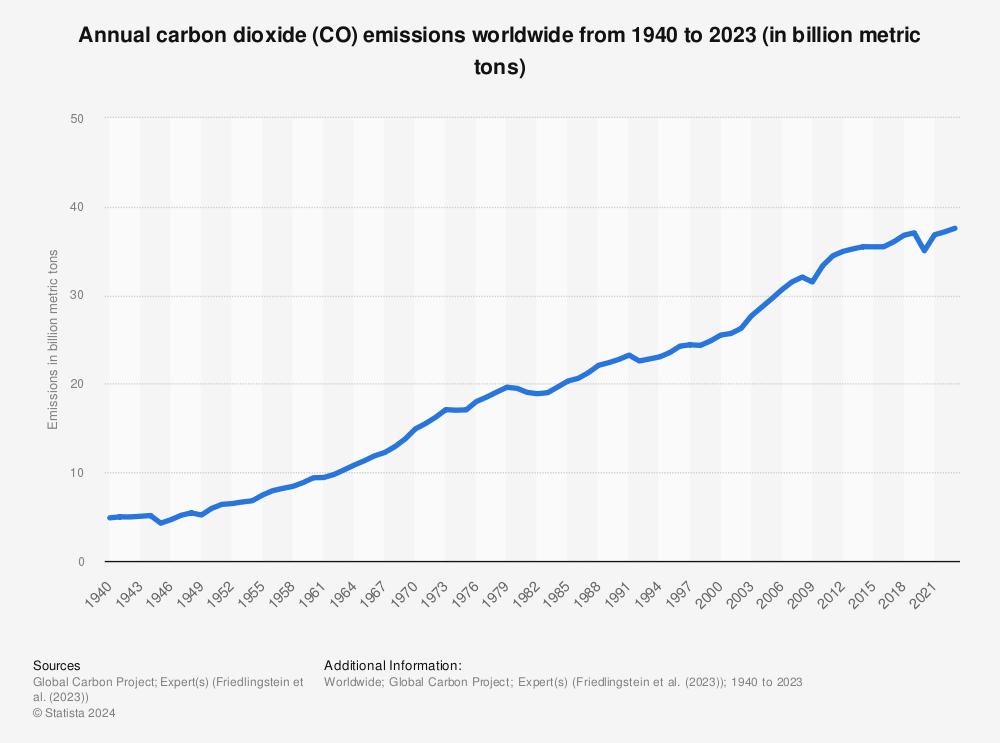
In addition to that, we would still be saving money even without the motion-sensor lights. This is because the solar panels can be installed for free, the state of New Jersey offers tax breaks for renewable energy, and any excess electricity generated from the solar panels can be sold back to the grid. Not only are we saving money, but we are actually making a profit. Using solar panels will also make our school more attractive to possible students, since their admission would mean their money was funding clean energy.
It is very important that the school finds a solution to limit our electricity usage, not only because it is expensive, but because it is currently powered by fossil fuels. The use of these fossil fuels is damaging to our world, emitting 37.15 billion metric tons of CO2 per year. Worldwide fossil fuels’ CO2 emissions per year from 1940-2023 can be shown above..
This CO2 gets caught in our atmosphere and holds heat there, slowly warming the Earth. Not only this, but the other chemicals released from fossil fuels (carbon monoxide, sulfur, nitrogen dioxide, nitric oxide, and others) are just as, if not sometimes more, harmful than CO2.
Next, we did the transportation audit. We tracked what sources of carbon-emissions students use to get to school. Majority of the school uses cars and buses as primary transportation. We do not have more specific data than that. There are so many problems that come with gasfueled vehicles being humans' primary transit. They emit carbon, their parts aren’t often reusable, they contribute to noise pollution, and they are expensive (i.e. not available to everyone despite most urban planning being dependent on them). So what can Lacodaire do to reduce bus and car reliance?
The first step is reducing car reliance. Busses can transport more people than a car can, so using a bus can lower the average person’s ecological footprint. One may wonder, “...but whether or not you use a car is a private issue, how can a school control that, and why would it matter if the school did!?” Well, the school can actually influence their students and their families via incentives.
and their families via incentives. For smaller decisions, like a pledge to walk, bike, or carpool to school, Lacordaire could offer free merch of your choice each semester (sweatshirts, t-shirts, bumper stickers, etc.). This may also end up encouraging families to buy more merchandise if they like their first product. Then, for bigger decisions, like investing in an electric vehicle, the school could offer small discounts on tuition.
Finally, we did a waste lab. Our group went through every trash can in James Hall and counted every piece of trash, as well as what type of trash it was. We found 68 pieces of paper, 30 of plastic, 3 aluminum, 13 full trash bags, 1 room of old furniture, and 4 pieces of food. Almost every piece of paper we found was undamaged and could’ve been recycled, same with the plastic, aluminum, and old furniture. The status of the 13 full trash bags is unknown. Lacordaire needs to reduce the amount of recyclables being misplaced into trash cans. The school also needs to make recycling more accessible. The school can easily do this by putting specific bins in every room that differentiate between the different types of waste. This way, the waste will already be sorted (less likely to be rejected when recycled), and it will be
sorted (less likely to be rejected when recycled), and it will lower the number of recyclable waste from being contaminated by food waste or other products that damage material. The bins would look something like what is pictured below.
This may seem expensive upfront, but instead of purchasing pre-labeled bins, we could label generic bins with markers. You can get very space-efficient bins for cheap on Amazon and Sharpies as well. If we do not act now to limit our waste, our school will be one of the many places drowned in pollution.
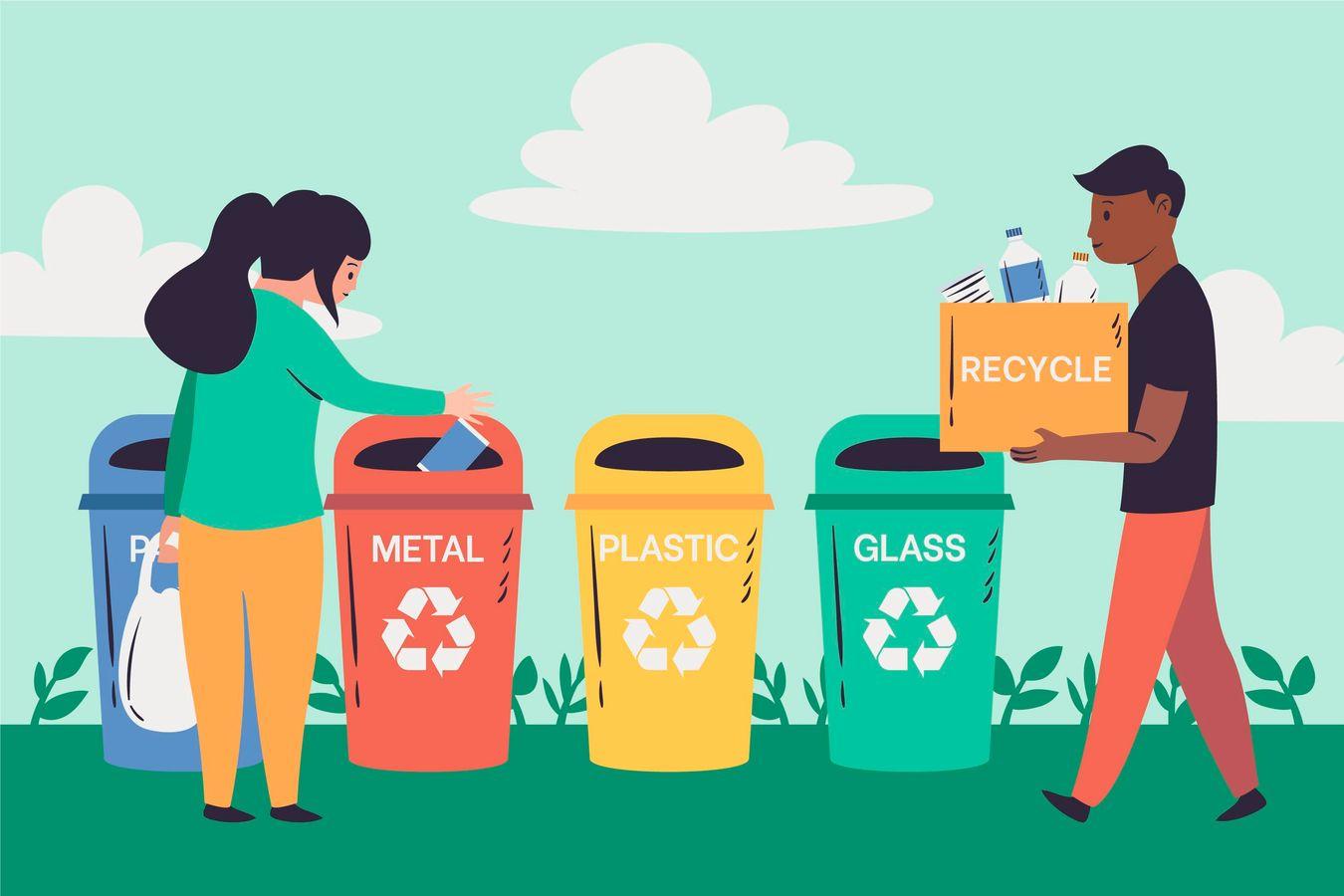

In addition to all the previously mentioned reasons why these solutions are necessary and beneficial to Lacordaire, these changes must be made to encourage the people around us. Our Catholic Dominican history is rooted in being leaders of activism and change. Climate justice and environmental activism are integral parts of this. Mahatma Gandhi said, “Be the change you want to see in the world,” and that is exactly what we need to do. It is not as hard as it seems to do what is right. Who knows how many schools or local businesses could follow in our footsteps if we only took the initiation. Don’t you want to be a leader?
Add body text Image by FreepikMontclair: A Microcosm of Human Influence on an Ecosystem
Elin Smith-Freitag '25
The environment of Montclair, New Jersey is a friendly suburban town, densely populated, and traveled by humans. Animals like deer, rabbits, raccoons, hawks, squirrels, chipmunks, and various small birds exist as well as bacteria and microorganisms. The plant species are vast and luckily include many old large trees, especially Dogwoods, Maples, and Oaks. Montclair also has many fish and insects, the ponds and streams around the area hold their unique ecosystems. Many roads, houses, town centers, and other human establishments have decreased biodiversity due to habitat fragmentation and pollution. The culture of highly manicured lawns and parks has introduced a surplus of chemicals including nitrogen through fertilizer. Though Montclair might seem biodiverse to the average eye, the natural habitats are near-empty compared to before urbanization, and the trend of decreasing biodiversity shows a disturbing outlook for life in the town. While much of Montclair is highly urbanized, one space called the Alonzo F. Bonsal Nature Preserve is the least touched piece of the town. Observed there is a perspective closer to the natural world before urbanization; a control point
when collecting data for the environmental impacts of human development. Being that Montclair is part of a Temperate seasonal, or deciduous, forest, certain animals including cougars and bears should exist. Urbanization caused the loss of these larger animals given the amount of natural space they require. Now that they are gone, the deer population is growing out of control and their only limiting factors are cars and food, only further limiting the biodiversity of plant species. Aside from animals, the area should have a greater variety of trees and plants, but due to selective cutting, many species have gone extinct. Human life has put a damper on natural sustainability by removing breeds that should exist.
Species Richness is a major telling of the effects of urbanization. The nature preserve shows scores ranging from 1114 on the Shannon-Wiener richness scale, while the developed campus of Lacordaire Academy scores between 7 and 9. Lacordaire Academy sits on a plot of land with buildings, electricity, and highly manicured agriculture, all restricting species richness. Species are incapable of inhabiting the nutrient-inndense area. Contrary to the school, Alonzo F. Bonsal Preservation welcomes
a greater level of species richness due to natural, nonurbanized land, which shows a better look into pre-urbanization life.
In terms of biodiversity, the two areas scored nearly identically. These readings could be fraudulent due to equipment errors and student workers with little experience using the tools. The two examined areas, the preserve, and school, are very close in distance, being only 1 mile apart, which could be the reason for uniform results between the two. Yet, while the preservation itself is relatively undisturbed, the surrounding area is highly urbanized, just like Lacordaire, so the reality outside the small preserve is most likely affecting the life inside. The average score of Shannon-Wiener Diversity was 1.7, a considerably low score. Even though there are many wellthought-out green spaces, they do not compensate for the negative effects of the urbanization of the area. Roads are fragmenting the habitats, and carbon emissions from large commuter activity reduce the availability of space and resources for biodiversity.
Water and Soil tests revealed the different effects urbanization has on the parks and bodies of water in Montclair. Each area is uniquely developed, Edgemont Park having the greatest level of human manicuring then Clark’s Pond, Yantecaw Park, and Glenfield Park being the least disrupted. Each test revealed a water Nitrogen level of 5 ppm, which is in the 75th percentile for chemical and soil Nitrogen levels going all the way up to a surplus of N4. Unusually high Nitrogen as displayed is the effect of fertilizer usage in the area.
Waterways face runoff after rainfall, especially with the creation of paving that doesn't help manage stormwater drainage. The excessive Nitrogen carried in runoff water from the soil accelerates the growth of algae and bacteria, which further depletes our oxygen source in the process of decomposition and blocks the ability of deep-water plants to photosynthesize. Edgemont Park is a prime example of how over-urbanization has taken a turn for the worse. Additionally, Montclair Township has spent over $4,000 on strobe lights to deter geese, all to keep goose manure off of playing fields. Now that the soil lacks the nutrients provided by Goose dung, even more fertilizer must be used, contributing to ridiculous supplies of Nitrogen in the water and earth. Serious measures must be taken to stop the vicious cycle of urbanization that is destroying the biodiversity in Montclair. Though there is no way to restore the life of the area to precolonization status in the near or far future, reducing the negative effects of the coming developments is possible. A major change that might seem insignificant and defective is the banning of the use of artificial fertilizers and instead starting a program where people turn their kitchen scraps into a townwide composting site, where it is broken down and cultivated to make the most nourishing plant fertilizer possible. Instead of the overly nitrogen-filled substances used now, natural compost is inexpensive and effective. Without the chemicals seeping into the soil and water, healthier microorganisms will inhabit
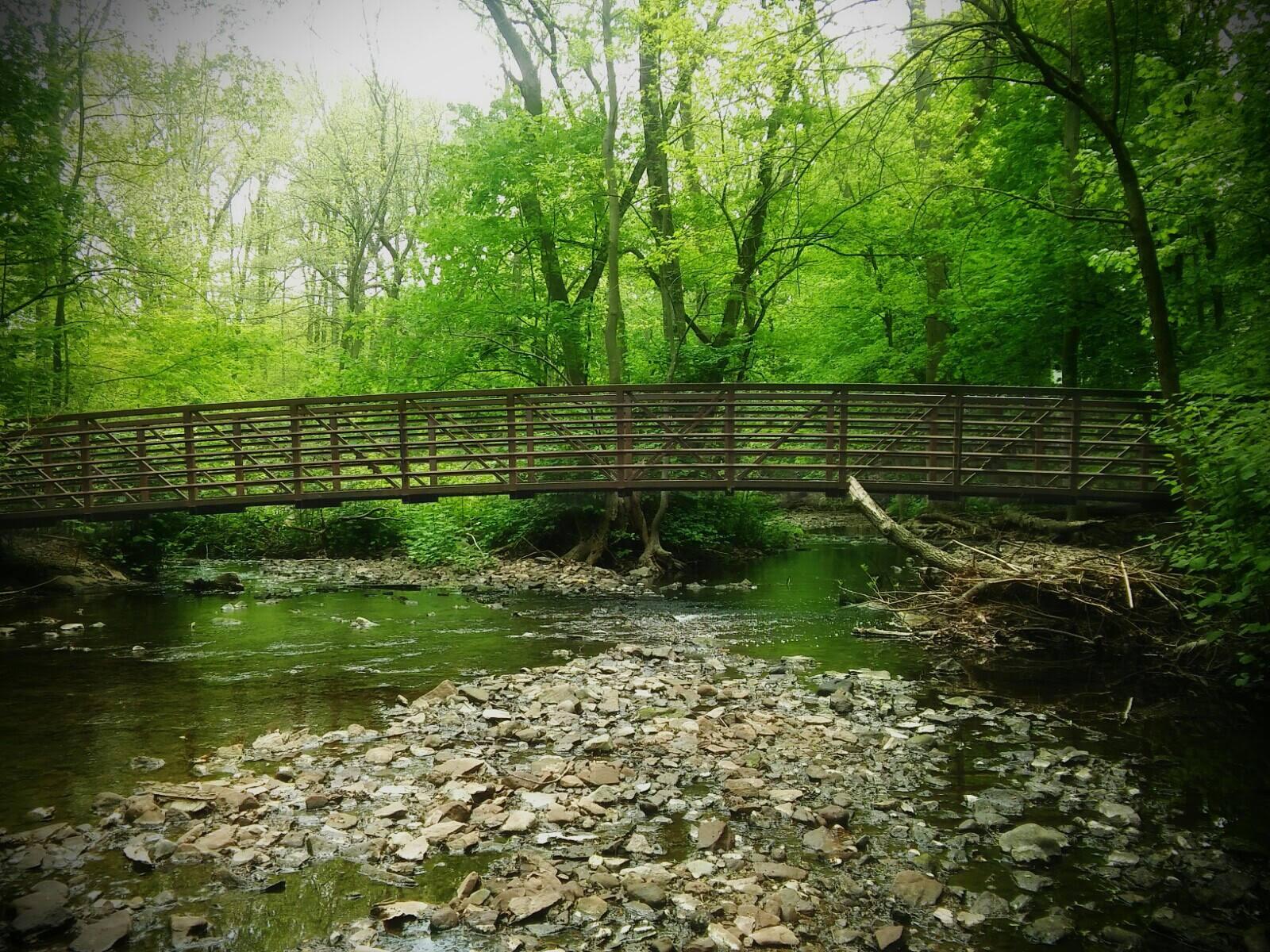
the soil, the water will be cleaner, and plants will grow more freely. The program can be run on a weekly basis, picking up food waste from the homes of Montclair and brought to a small and local site to be disposed into a compost pile. While the process will take several months to start, once it is running, it will have minimal electricity usage or cost. Additionally Montclair Township should remove the goose-dettering lights, to allow the vital effects they bring to the biome. The future of Montclair is in the hands of the decisions made now, and small, sustainable changes as simple as using compost are immensely beneficial.
Image: Courtesy of Jon Grove of the Alonzo F. Bonsal Wildlife Preserve.
Want some plastic with that shake?
 Lilina Giarrusso '25
Lilina Giarrusso '25
One day, our world changed. We found out that ethane and propane could be used to make plastic. It became a household staple, used for food conservation, storage, wrappers, disposable water bottles. However, their marketing covered up a large issue that has left our society defenseless. These “disposable” items, made for “one-time use,” are not as efficient as we had hoped. They take 20-500 years to break down. Once they finally do, where do they go? They go right back to us through a process known as bioaccumulation and biomagnification. Eaten by worms and bugs, which are then eaten by birds, small land mammals, and fish. Then, they are eaten by bigger animals that we eat. Our cows, pigs, sheep, chicken, salmon, tuna, cod, every animal you’ve ever eaten contains microscopic plastic molecules.
Scientists estimate that the average person eats 5 grams of microplastics a week. That’s a credit card. At the end of the month, we’ve eaten 4 credit cards. Why does this matter though? We can’t feel it, see it, smell it, taste it?

Why should you care that you’re ingesting thousands of atoms, so insignificant compared to your pompous existence. Well, they may just be what leads you to meeting your maker.
The health effects of microplastics are severe. An article written by Yue Li, Le Tao, Qiong Wang, Fengbang Wang, Gang Li, and Maoyong Song, published by ACS Publications showcases the side effects of microplastics. “Experiments show that the exposure to microplastics induces a variety of toxic effects, including oxidative stress, metabolic disorder, immune response, neurotoxicity, as well as reproductive and developmental toxicity.”(See image on last page.)
Microplastics are everywhere, it’s impossible to avoid them. Even if you limit your diet to vegan, they will enter your body in other ways. They have been found on the farthest ends of the Earth, Antarctica, the peak of Mount Everest, and even in the Mariana Trench. Not only can you be harmed by the microplastics entering your system directly, you can be harmed by their mere existence. Their presence can be found in microalgae, and “reduce the availability of nutrients (in microalgae).” This then hurts the entire food chain, increasing the number of microalgae that fish need to consume for minimal nutrients. That microplastic then follows the line of predators up the food chain, and eventually reaches its way back to you. This process is known as biomagnification and there is almost nothing you can do to avoid it.
The main problem with microplastics isn’t even about human consumption, it’s about environmental impact. As previously stated the microplastics have to go through every step of the food chain before they get to humans, meaning they affect a lot of animals. An article entitled “Wildlife Ingestion of Microplastics,” from Canadian Wildlife Health Cooperative, says that “larger plastics can entangle wildlife and cause mortality… microplastics that are ingested can block the gastrointestinal (GI) tract of small birds and fish… lacerations or irritation to sensitive GI tissues… microplastics can cause a decrease in physical condition, resulting in increased morbidity and mortality… (microplastics impact) population dynamics.”
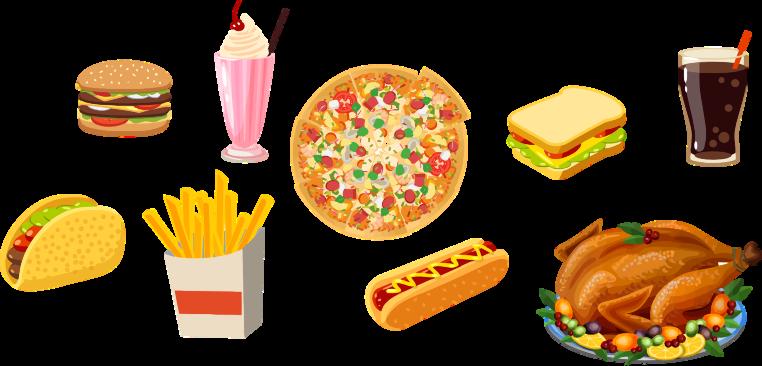
Even if you never consume microplastics yourself, which is highly unlikely, it’s still causing harm to the world around you. Changes in animal populations affect things like the food chain, other animal populations, biodiversity, and genetic diversity There is only way to limit microplastic pollution, and it is by stopping it at the source. To eliminate microplastics we either need to stop using plastic, find more ways to actually recycle plastic, or heavily enforce that it can’t be thrown in the ocean. All of these solutions have their own issues. If we stop using plastic, what stops us from just replacing it with another troublesome waste product. We could use glass containers for everything, but then people would complain about prices, and there would be more food deserts in low-income areas.
The second solution is to find ways to ACTUALLY recycle plastic. From, MIT Technology Review, “72% (of plastic) ends up in landfills or the environment… only 9% of the plastic ever produced has been recycled, and 19% has been incinerated.” The passage continues to say that the plastic industry “generates upward of $700 billion a year in revenues.” How much of that money could be put towards innovations in recycling? Why don’t recycling plants ship back plastic to the company that made it, and they’re responsible for sustainably repurposing the plastic. If they don’t, or if any of that plastic ends up getting sold to foreign countries that won’t recycle it, or ends up in a landfill, they should be fined or imprisoned. It should be enforced like other environmental legislations. The final solution would be heavily enforcing that people and companies don’t pollute the ocean.
Similar to the last idea, we could use fines and imprisonment as incentives. The reason why it’s specifically important to not pollute plastic in the ocean is because that is where the plastics break down into such small pieces where they can be ingested by microalgae and fish, entering the food chain and beginning the process of biomagnification.
The issue of microplastics needs to be addressed. Since we haven’t had the ability to observe the longterm effects of microplastics we don’t know exactly how they affect the human body (or animals) in their entirety. We need to reduce the amount of plastic we use not just to reduce microplastics, but to reduce pollution as a whole.
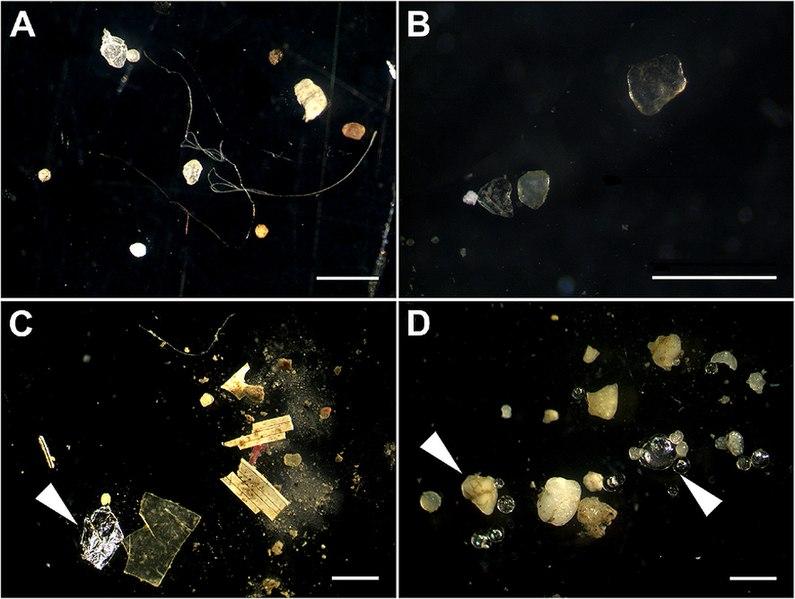
Source: Wagner et al.: Microplastics in freshwater ecosystems: what we know and what we need to know. In: Environmental Sciences Europe. 26, 2014
E-Waste: Air Wrapping Our Way to Oblivion
Elin Smith-Freitag '25
Though little is known about the seemingly harmless appliance, loved by the majority of the United States, let alone the entire world, Hair Dryers pose a great risk to the environment. The dangers of these devices span from air pollution to E-waste and deserve close consideration during purchase, use, and disposal to protect the environment. There must be a common knowledge of how they are to be treated among their users to combat the growing destruction of the product.
Since the late nineteenth century, the hair dryer has proved itself a convenient, efficient, and magical bathroom appliance. Quickly, humans took to them for a quick method to dry their hair before their day, but not long after, many learned that the Hair Dryer could be used for pets, art, and other subjects. Today, eighty percent of Americans use a hair dryer, and they come in a wide variety of shapes, colors, and specialties. In the last few years, Dyson came out with a new all-in-one device to dry, straighten, and curl hairwhich, of course, consumers took to fondly. The Airwrap, as it is called, even became a verb in modern-day slang. To Airwrap one’s hair is to modify it with the device.
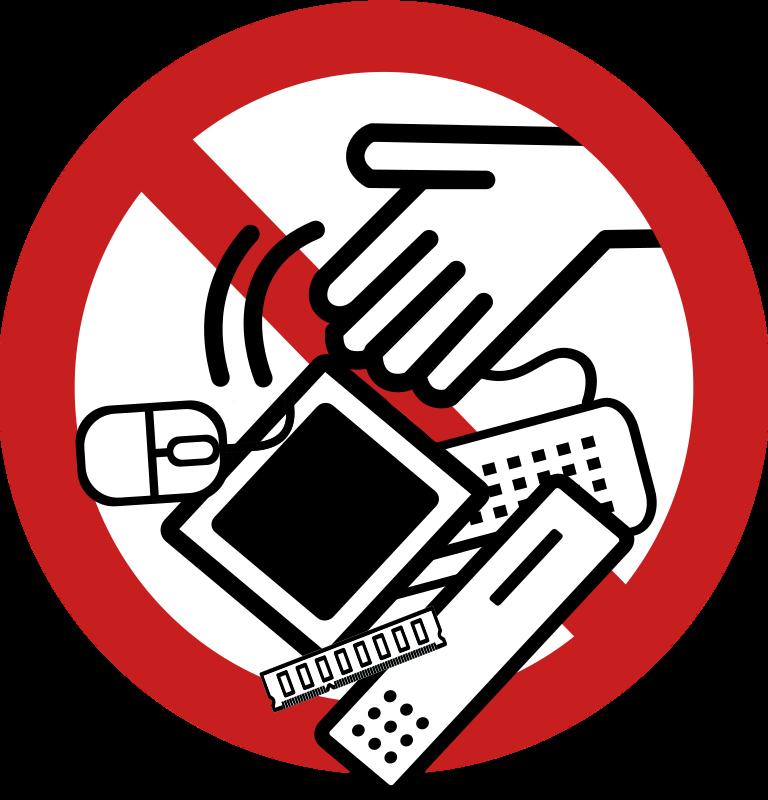
As long as hair dryers exist, humans have proved they will be attracted to them in the busy modern world. Unfortunately, there is a certain misunderstanding of the concerns posed by hair dryers. Often, the appliances end up in landfills along with other forms of E-waste, with harmful chemicals seeping out from the internal metal and wiring. Often, the plastic that metal hair dryers are made out of will never break down due to the incapability of microorganisms to deteriorate the non-organic material.
Consumers are not all to blame for this issue though; manufacturers do a terrible job of advertising the proper disposal of their products. Ideally, when a hair dryer has hit the wall, it should be disposed of at a recycling center where they can disassemble and repurpose materials, such as scrap metal. Hair dryers cannot be disposed of in general home recycling, so out of convenience, people do not care to take responsible measures.
To create an incentive for people to recycle these devices, there must be substantial gain, as the human race is a reward-driven species.
Environmental awareness has proven to be insufficient at causing a serious change in the culture of the disposal society as E-waste is not on the decline. The responsibility falls into the hands of the producers of the products to influence the consumers. Since many of the leading brands selling hair dryers are very financially comfortable, possible economic benefits for customers have potential. A viable alternative would be to allow the buyer a discount for returning the old dryer free of shipping charge, instead of allowing the hair dryers to end up in the trash before buying a whole new one at full price. If the company receives the old dryers, they can make it a point to send them to adequate recycling centers, limiting the hassle for individuals.
In addition to the convenience, the buyer will be motivated to spend even more money under the idea that they are saving. If the return strategy isn't possible, another option is town material pick-ups.
Essentially, a member of the town committee could be assigned and paid to collect curbside E-waste, including hair dryers, and drop in a sight where artists or craftsmen can pick up free materials. “One man’s trash is another's gold” summarizes the goal of the initiative. This method provides jobs for municipal workers, free material for crafters, and relief for consumers. In the end, when materials are deemed unwanted, they can be taken to a recycling center by a town employee who is trusted with not trashing the material as anyone else might.
Environmental awareness has proven to be insufficient at causing a serious change in the culture of the disposal society as E-waste is not on the decline. The responsibility falls into the hands of the producers of the products to influence the consumers. Since many of the leading brands selling hair dryers are very financially comfortable, possible economic benefits for customers have potential. A viable alternative would be to allow the buyer a discount for returning the old dryer free of shipping charge, instead of allowing the hair dryers to end up in the trash before buying a whole new one at full price. If the company receives the old dryers, they can make it a point to send them to adequate recycling centers, limiting the hassle for individuals.
Pondering Reflections
Elleana
Mariano '26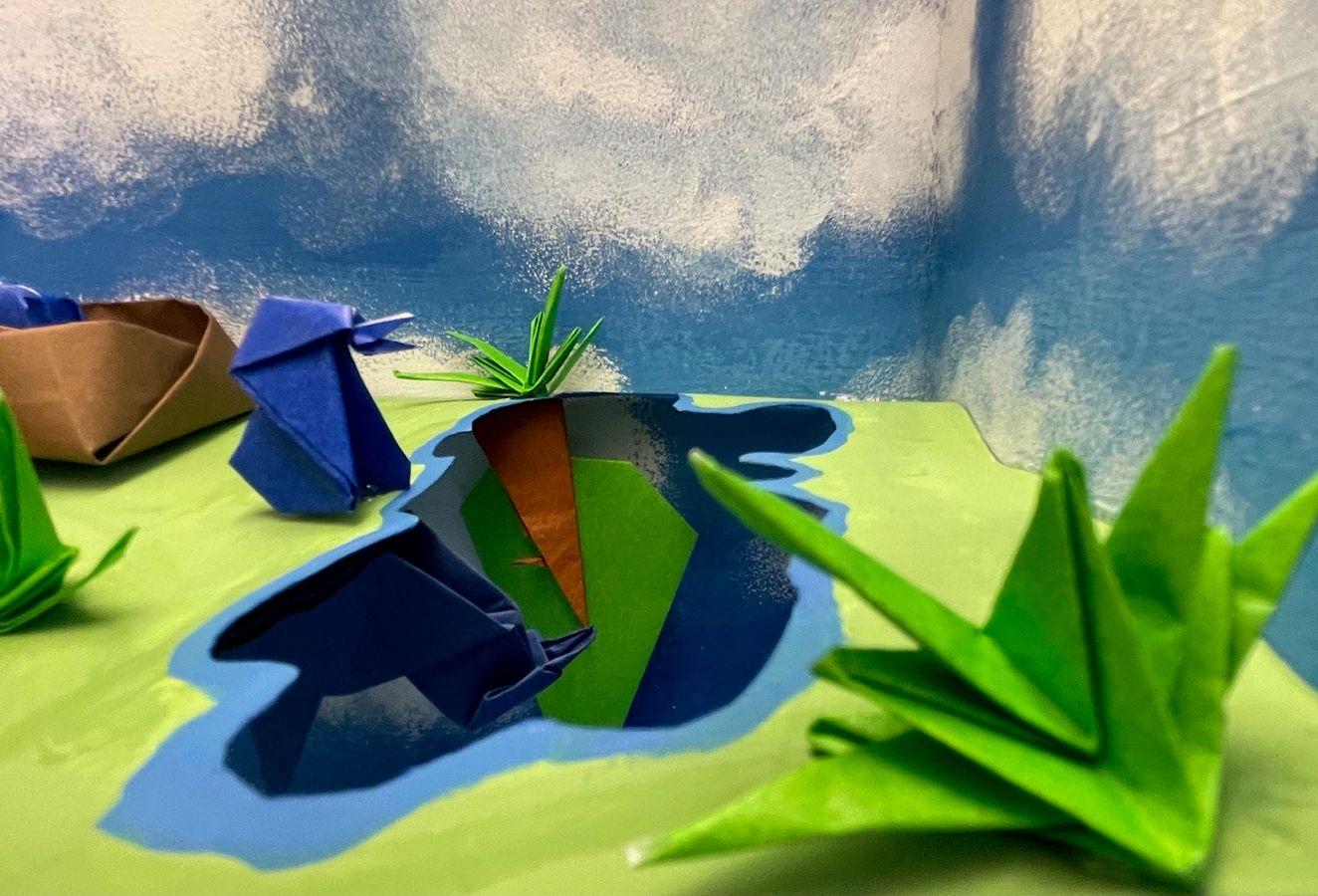
The fledgling blue bird is looking excitedly at its future through the pond, wanting to quickly grow up into an adult and leave the nest.
Life is both looking back and looking forward.
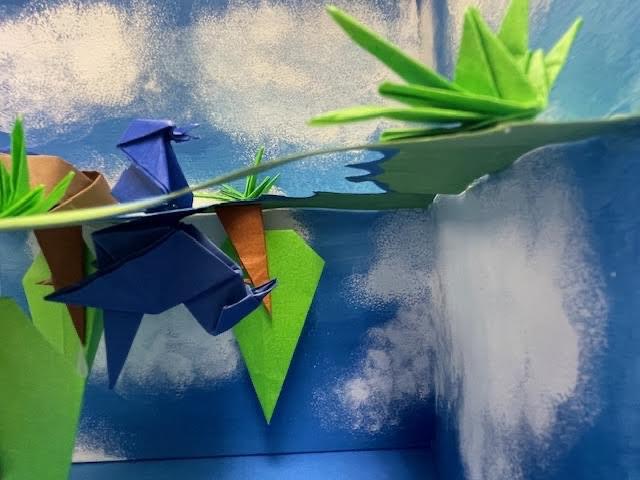

The mature blue bird looks back at its childhood through the pond, wanting to go back to a small chlild, who was kept in the safety of a nest and fed by its parents.
Mountain
Victoria Hui '25

